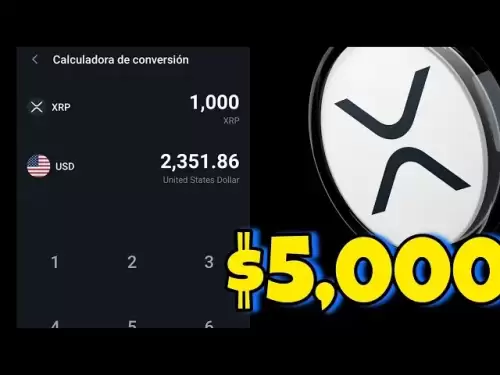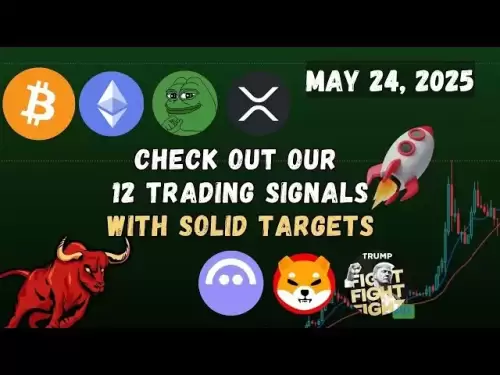-
 Bitcoin
Bitcoin $108,932.7593
0.17% -
 Ethereum
Ethereum $2,552.2823
-0.32% -
 Tether USDt
Tether USDt $1.0001
0.00% -
 XRP
XRP $2.3466
-0.20% -
 BNB
BNB $675.4050
1.24% -
 Solana
Solana $176.9606
-1.07% -
 USDC
USDC $0.9998
-0.01% -
 Dogecoin
Dogecoin $0.2269
-2.65% -
 Cardano
Cardano $0.7556
-2.38% -
 TRON
TRON $0.2712
0.44% -
 Sui
Sui $3.6290
-1.67% -
 Hyperliquid
Hyperliquid $34.9362
2.60% -
 Chainlink
Chainlink $15.4826
-3.71% -
 Avalanche
Avalanche $22.8678
-5.26% -
 Stellar
Stellar $0.2873
-1.83% -
 Shiba Inu
Shiba Inu $0.0...01441
-1.92% -
 Bitcoin Cash
Bitcoin Cash $425.3130
-3.75% -
 UNUS SED LEO
UNUS SED LEO $8.8112
0.29% -
 Hedera
Hedera $0.1899
-3.78% -
 Toncoin
Toncoin $3.0108
-1.33% -
 Monero
Monero $402.3528
0.59% -
 Litecoin
Litecoin $96.5363
-1.74% -
 Polkadot
Polkadot $4.5725
-2.69% -
 Bitget Token
Bitget Token $5.6804
1.79% -
 Pepe
Pepe $0.0...01382
-6.92% -
 Pi
Pi $0.7690
-0.39% -
 Dai
Dai $0.9999
-0.02% -
 Ethena USDe
Ethena USDe $1.0007
0.04% -
 Aave
Aave $267.4890
3.21% -
 Uniswap
Uniswap $6.1855
0.49%
What is the role of the middle rail of Bollinger Bands? How to use it to determine the trend?
The middle rail of Bollinger Bands, a 20-day SMA, is crucial for trend analysis in crypto trading, indicating bullish trends when prices are above it and bearish when below.
May 24, 2025 at 11:00 pm
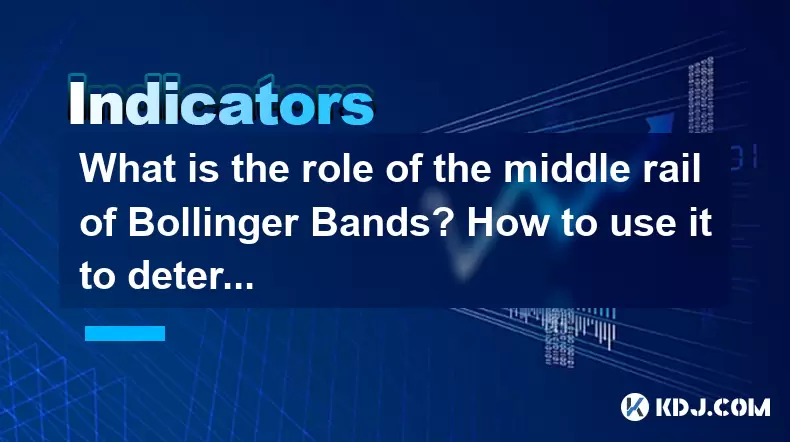
Bollinger Bands are a popular technical analysis tool used by traders in the cryptocurrency market to assess price volatility and potential trend directions. Comprising three lines, the middle rail of Bollinger Bands plays a crucial role in understanding market trends and making informed trading decisions. This article will explore the significance of the middle rail and provide a detailed guide on how to use it to determine trends in the crypto market.
Understanding Bollinger Bands
Bollinger Bands consist of three lines: the upper band, the lower band, and the middle rail. The middle rail is a simple moving average (SMA) typically set to a 20-day period. The upper and lower bands are calculated by adding and subtracting two standard deviations from the middle rail, respectively. These bands expand and contract based on market volatility, providing insights into potential price movements.
The Role of the Middle Rail
The middle rail serves as the backbone of Bollinger Bands. It represents the average price over a given period, offering a baseline for assessing whether the current price is above or below the average. This line is crucial for identifying the overall trend of an asset. When the price is above the middle rail, it suggests a bullish trend, and when below, it indicates a bearish trend.
Using the Middle Rail to Determine Trends
To effectively use the middle rail for trend analysis, traders must observe the relationship between the current price and the middle rail. Here’s a detailed guide on how to do this:
Identify the Current Position of the Price: The first step is to determine whether the current price of the cryptocurrency is above or below the middle rail. If the price is above the middle rail, it indicates a potential bullish trend. Conversely, if the price is below the middle rail, it suggests a bearish trend.
Observe the Price Movement Relative to the Middle Rail: Pay close attention to how the price interacts with the middle rail. If the price consistently stays above the middle rail and continues to move higher, it reinforces the bullish trend. Similarly, if the price remains below the middle rail and continues to decline, it strengthens the bearish trend.
Use the Middle Rail as a Pivot Point: The middle rail can act as a pivot point for the price. If the price crosses above the middle rail after being below it, it could signal a shift from a bearish to a bullish trend. Conversely, if the price crosses below the middle rail after being above it, it might indicate a shift from a bullish to a bearish trend.
Combine with Other Indicators: While the middle rail is a powerful tool, it is most effective when used in conjunction with other technical indicators. For instance, combining the middle rail with the Relative Strength Index (RSI) or Moving Average Convergence Divergence (MACD) can provide more robust trend signals.
Practical Example: Using the Middle Rail in Bitcoin Trading
To illustrate how to use the middle rail in real-world trading, let’s consider an example with Bitcoin (BTC). Suppose you are analyzing the daily chart of Bitcoin, and you notice that the current price is consistently above the 20-day SMA (middle rail) and continues to rise.
- Step-by-Step Analysis:
- Check the Position of the Price: Confirm that the current price of Bitcoin is above the middle rail. This suggests a bullish trend.
- Monitor Price Movement: Observe that the price of Bitcoin has been steadily increasing and staying above the middle rail for several days. This reinforces the bullish trend.
- Watch for Crossovers: If the price of Bitcoin were to cross below the middle rail, it could signal a potential shift to a bearish trend. Conversely, if the price continues to stay above the middle rail, the bullish trend remains intact.
- Combine with Other Indicators: Use the RSI to confirm the bullish trend. If the RSI is also above 50, it further supports the bullish trend indicated by the middle rail.
The Middle Rail and Volatility
The middle rail also plays a role in understanding market volatility. When the bands are wide, it indicates high volatility, and when they are narrow, it suggests low volatility. The middle rail helps traders assess whether the price is moving within a normal range or if it is deviating significantly from the average, which can signal potential trend reversals or continuations.
Limitations of the Middle Rail
While the middle rail is a valuable tool, it has its limitations. It is based on historical data and does not predict future movements with certainty. Traders should use the middle rail in conjunction with other technical analysis tools and fundamental analysis to make well-rounded trading decisions.
Frequently Asked Questions
Q1: Can the middle rail of Bollinger Bands be adjusted to different time frames?
Yes, the middle rail, which is typically a 20-day SMA, can be adjusted to different time frames depending on the trader's strategy. For short-term trading, a shorter period such as a 10-day SMA might be used, while for long-term analysis, a longer period like a 50-day SMA could be more appropriate. Adjusting the time frame allows traders to tailor their analysis to their specific trading goals.
Q2: How does the middle rail interact with other components of Bollinger Bands?
The middle rail interacts with the upper and lower bands to provide a comprehensive view of market conditions. When the price touches or crosses the upper band, it may indicate overbought conditions, while touching or crossing the lower band may suggest oversold conditions. The middle rail helps traders understand the average price and how far the current price is from this average, aiding in trend analysis and potential reversal identification.
Q3: Can the middle rail be used in isolation for trading decisions?
While the middle rail provides valuable information about the average price and potential trends, it should not be used in isolation for trading decisions. It is most effective when combined with other technical indicators and analysis tools. Using the middle rail alone may lead to misinterpretations of market conditions and potentially result in poor trading decisions.
Q4: How does the middle rail help in identifying trend reversals?
The middle rail can help identify trend reversals by acting as a pivot point. When the price crosses the middle rail from below to above, it may signal a shift from a bearish to a bullish trend. Conversely, a crossover from above to below the middle rail could indicate a shift from a bullish to a bearish trend. Traders should look for confirmation from other indicators and price action to validate these signals.
Disclaimer:info@kdj.com
The information provided is not trading advice. kdj.com does not assume any responsibility for any investments made based on the information provided in this article. Cryptocurrencies are highly volatile and it is highly recommended that you invest with caution after thorough research!
If you believe that the content used on this website infringes your copyright, please contact us immediately (info@kdj.com) and we will delete it promptly.
- Will the ADA Price Soar to $1.50?
- 2025-05-25 03:30:15
- Hottest Crypto Gems with Breakout Potential in 2025: BlockDAG, Solana, Ethereum & Binance Coin Set to Soar
- 2025-05-25 03:30:15
- Solana could save 7 trillion dollars in fees, challenging Ethereum and Bitcoin
- 2025-05-25 03:25:19
- This article features four networks doing exactly that: BlockDAG, Hyperliquid, SUI, and Kaspa
- 2025-05-25 03:25:19
- XRP (XRP) Market Gets More Active as We Approach the Next Bull Run
- 2025-05-25 03:20:13
- ALL4 Mining Launches New Incentive Program to Meet Growing Market Demand for Convenient Cryptocurrency Mining Solutions
- 2025-05-25 03:20:13
Related knowledge
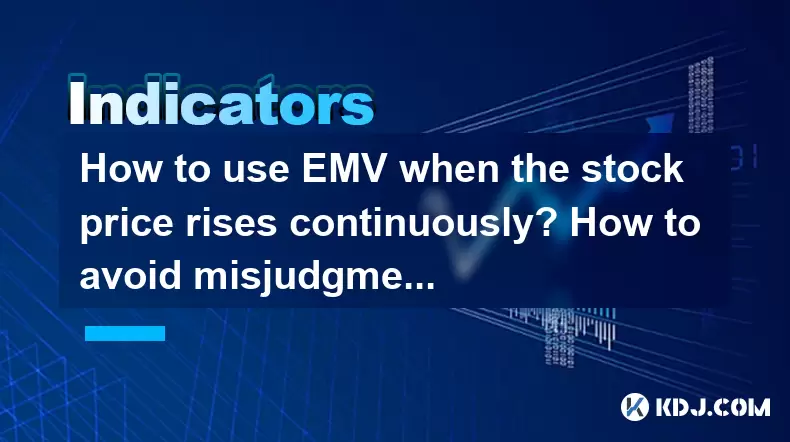
How to use EMV when the stock price rises continuously? How to avoid misjudgment in extreme market conditions?
May 23,2025 at 07:29pm
In the dynamic world of cryptocurrency trading, the Exponential Moving Average (EMA) is a powerful tool that traders use to make informed decisions, especially during periods of continuous stock price rises. Understanding how to effectively use EMAs and avoiding misjudgment in extreme market conditions are crucial skills for any crypto trader. This arti...
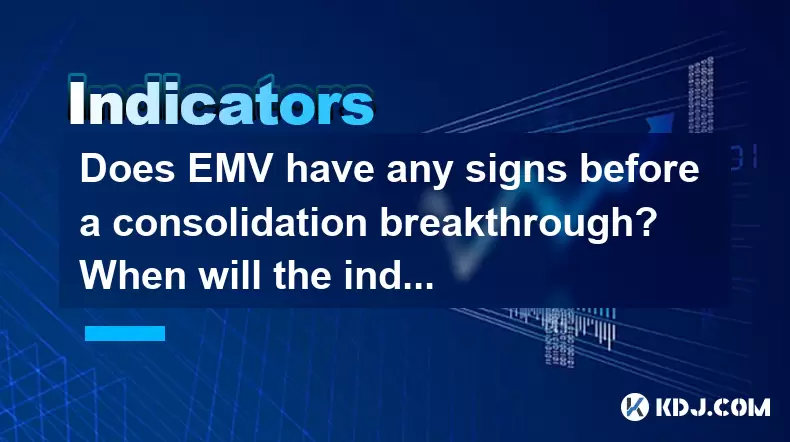
Does EMV have any signs before a consolidation breakthrough? When will the indicator give an early warning?
May 23,2025 at 06:42pm
Does EMV have any signs before a consolidation breakthrough? When will the indicator give an early warning? The Ease of Movement Value (EMV) is a technical indicator that helps traders understand the relationship between price and volume in the cryptocurrency market. It is particularly useful for identifying potential breakouts from consolidation period...
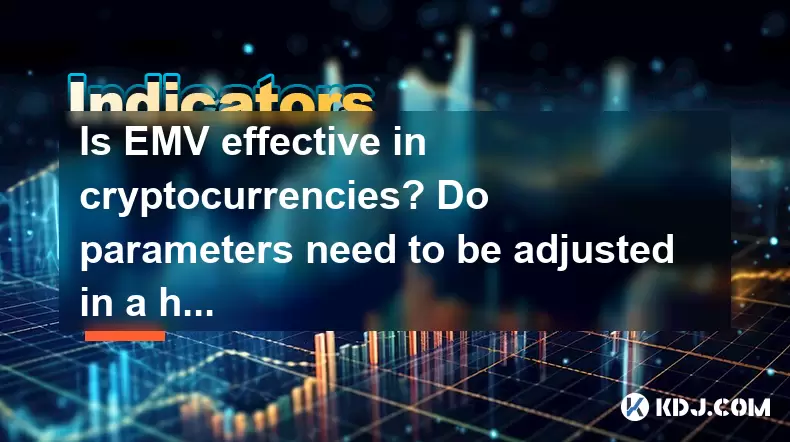
Is EMV effective in cryptocurrencies? Do parameters need to be adjusted in a high volatility environment?
May 24,2025 at 01:49am
Is EMV effective in cryptocurrencies? Do parameters need to be adjusted in a high volatility environment? EMV, or Ease of Movement Value, is a technical indicator that measures the relationship between price changes and volume. Originally developed for traditional financial markets, its application in the cryptocurrency space raises several questions ab...
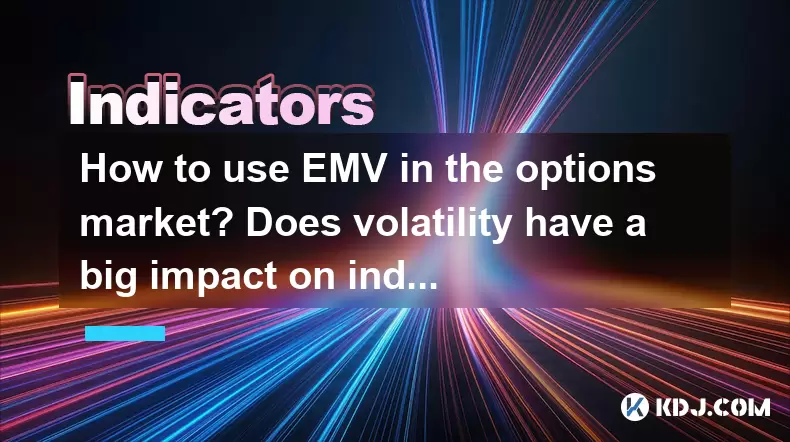
How to use EMV in the options market? Does volatility have a big impact on indicators?
May 24,2025 at 07:28am
How to Use EMV in the Options Market? Does Volatility Have a Big Impact on Indicators? The Ease of Movement Value (EMV) is a technical indicator that helps traders understand the relationship between price and volume, and it can be particularly useful in the options market. In this article, we will explore how to use EMV in the options market and examin...
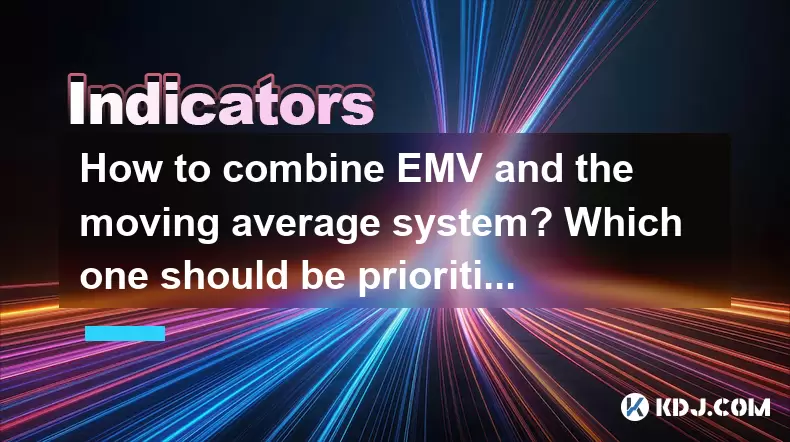
How to combine EMV and the moving average system? Which one should be prioritized when the golden cross and the dead cross appear at the same time?
May 24,2025 at 07:21pm
The combination of the Exponential Moving Average (EMA) and the moving average system is a popular strategy among cryptocurrency traders to identify potential trends and make informed trading decisions. This article will delve into how to effectively combine these tools, and what to do when the golden cross and the dead cross appear simultaneously. Unde...
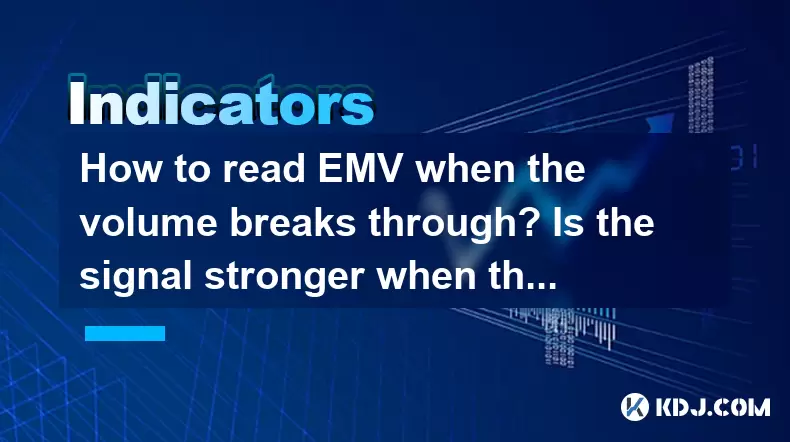
How to read EMV when the volume breaks through? Is the signal stronger when the volume and price cooperate?
May 24,2025 at 02:14pm
Understanding how to read EMV (Ease of Movement) when volume breaks through and assessing the strength of signals when volume and price cooperate are crucial skills for cryptocurrency traders. This article will delve into these topics, providing detailed insights and practical guidance. What is EMV and Its Importance in Cryptocurrency Trading?EMV, or Ea...

How to use EMV when the stock price rises continuously? How to avoid misjudgment in extreme market conditions?
May 23,2025 at 07:29pm
In the dynamic world of cryptocurrency trading, the Exponential Moving Average (EMA) is a powerful tool that traders use to make informed decisions, especially during periods of continuous stock price rises. Understanding how to effectively use EMAs and avoiding misjudgment in extreme market conditions are crucial skills for any crypto trader. This arti...

Does EMV have any signs before a consolidation breakthrough? When will the indicator give an early warning?
May 23,2025 at 06:42pm
Does EMV have any signs before a consolidation breakthrough? When will the indicator give an early warning? The Ease of Movement Value (EMV) is a technical indicator that helps traders understand the relationship between price and volume in the cryptocurrency market. It is particularly useful for identifying potential breakouts from consolidation period...

Is EMV effective in cryptocurrencies? Do parameters need to be adjusted in a high volatility environment?
May 24,2025 at 01:49am
Is EMV effective in cryptocurrencies? Do parameters need to be adjusted in a high volatility environment? EMV, or Ease of Movement Value, is a technical indicator that measures the relationship between price changes and volume. Originally developed for traditional financial markets, its application in the cryptocurrency space raises several questions ab...

How to use EMV in the options market? Does volatility have a big impact on indicators?
May 24,2025 at 07:28am
How to Use EMV in the Options Market? Does Volatility Have a Big Impact on Indicators? The Ease of Movement Value (EMV) is a technical indicator that helps traders understand the relationship between price and volume, and it can be particularly useful in the options market. In this article, we will explore how to use EMV in the options market and examin...

How to combine EMV and the moving average system? Which one should be prioritized when the golden cross and the dead cross appear at the same time?
May 24,2025 at 07:21pm
The combination of the Exponential Moving Average (EMA) and the moving average system is a popular strategy among cryptocurrency traders to identify potential trends and make informed trading decisions. This article will delve into how to effectively combine these tools, and what to do when the golden cross and the dead cross appear simultaneously. Unde...

How to read EMV when the volume breaks through? Is the signal stronger when the volume and price cooperate?
May 24,2025 at 02:14pm
Understanding how to read EMV (Ease of Movement) when volume breaks through and assessing the strength of signals when volume and price cooperate are crucial skills for cryptocurrency traders. This article will delve into these topics, providing detailed insights and practical guidance. What is EMV and Its Importance in Cryptocurrency Trading?EMV, or Ea...
See all articles
























